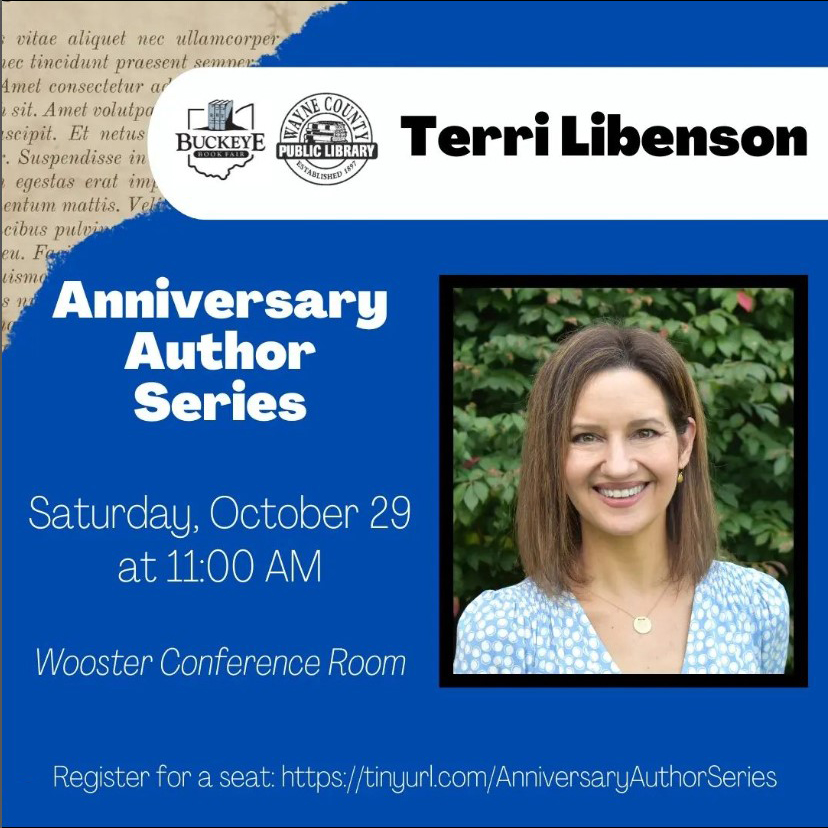Studio Tour!
Just to be clear, this is more of an office than a typical artist’s studio, as it’s ridiculously clean and devoid of art supplies (all digital, folks). But I think you’ll get a kick out of it. Enjoy the tour!
Just to be clear, this is more of an office than a typical artist’s studio, as it’s ridiculously clean and devoid of art supplies (all digital, folks). But I think you’ll get a kick out of it. Enjoy the tour!
I get such wonderful letters and emails from readers. Occasionally, they ask me overlapping questions, so I thought I’d create a fun video answering some of them. Enjoy!

Join me at this fun, family-friendly author event in Wooster, Ohio on Saturday, October 29 at 11 am. I’ll be presenting, signing, and taking Q&A. For info and registration, click here. Hope to see you!

Saturday, October 8, I’ll be among the talented author lineup at the Tweens Read Book Festival in Houston, Texas! I’ll be on multiple panels and will do an afternoon signing. I hope you can make it! For registration and details, click here.
by Terri Libenson

Growing up, the “graphic novels” I read were comic strip anthologies – collections of Peanuts and B.C. cartoons, as well as one well-loved, worn-out copy of Momma by Mell Lazarus. My “graphic novels” were the newspaper funny pages, which I devoured every Sunday morning (full color, woo!) over breakfast. My “graphic novels” were the MAD magazines and Archie comic books I snuck from my older brother’s room and always forgot to return.
To sum up, my graphic novels weren’t technically graphic novels. They were old school comics and they were the only things I loved reading at the time. (Had I today’s wide selection of kids’ graphic novels, I would’ve never left my room!)
Without those comics, I may never have become a newspaper cartoonist myself, or have gone on to pen my own graphic novels (okay, technically, hybrids). Comics of any sort can be so important to non-traditional readers. They can inspire, teach, and show that there is more than one way to tell a story. In fact, I was a huge storyteller as a kid, and all my made-up adventures were told through comics. When I married writing and drawing, I was in my element.
When “adult” graphic novels began to emerge, I got hooked. Most importantly, they became my gateway into books of all kinds. As a kid, I hated history. But reading Maus sparked a curiosity of the past and a visceral connection to the material. Now I can’t get enough of historical books of any sort.
I never really thought of the importance of comics, though, until college, when I discovered underground cartoonists like Lynda Barry. She inspired me to experiment with narrative-style cartoons. Eventually when I got syndicated, and then later when I tried my hand at writing books, her work resurfaced in my mind. I approached my writing similarly — from an authentic, autobiographical place.
Many people think that graphic novels are inferior to prose books. I disagree wholeheartedly. As someone who writes both prose and GN stories, I would argue that graphic novels aren’t inferior, they are just different.
They are uniquely nuanced. The author must often condense the story, whittling it down to its most important elements; meanwhile, the artist (either the same person or someone else) must convey emotions and actions accurately. All this takes serious skill. Plus, many graphic novel illustrations are stunning works of art that you can spend hours dissecting. The plots and character development can be creative and complex, and through visual means, have the ability to break the confines of traditional prose. Funny enough, stories in boxes can truly be “out of the box.”
For the reluctant reader, the play between images and writing is a serious break for the eyes, especially if it’s hard to focus on text alone. Or if a reader is just more visually inclined (someone who likes comics, animation, etc.), these stories are truly engaging. And there are so many choices in genres now, from historical fiction, to biographies, to fantasy, to re-told classics, to reality-based novels. Moreover, it’s wonderful to see (literally) the range of diverse characters.
Whether graphic novels are all a child reads or just part of their reading stockpile, a parent needn’t worry. As screenwriter and novelist John Ridley once said: “There are still some people out there who believe comic books are nothing more than, well, comic books. But the true cognoscenti know graphic novels are – at their best – an amazing blend of art literature and the theater of the mind.”